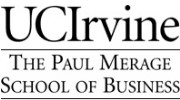As I may have mentioned, I purchased two business-related books that I planned to read over the Christmas break. The second of these books is
Crossing the Chasm by Geoffrey Moore. This book is the must have books for new technology ventures (and for those who experience some success, but suddenly found new sales coming in very slowly).
In the past, I have read parts of this book, but never read the whole thing cover to cover. After finishing reading it, I want to kick myself. Numerous companies that I worked with back in London were hitting the chasm and did not recognize it or know what to do. I even remember mentioning to an owner of an extremely successful London company that they hit the chasm and should read this book, but I never took the initiative to read it then (in my defense, I was in the process of learning a completely new software and networking environment).
For those of you that are saying, "'Chasm' what are you talking about, Speirs?": when a new company is formed and offers a new, innovative piece of technology that would solve or improve some problem, they often work hard over a year or two to get that first sale. They may even get a second or more sales depending on the market and product. They all pop out champagne believing that they are soon going to dominate the market, but something happens. The next sales are very difficult. They are confused because they have some satisfied customer references, yet they do not move these new prospects. It is at this moment that they have arrived at the Chasm.
Across the Chasm are these new prospects who are not impressed by the current batch of customer references or the current marketing approaches. To be clear, these new prospects are the holy grail; they represent the path to solid profitability for the company. Many companies die at the Chasm because to cross it requires some radical changes about how the company operates.
Crossing the Chasm gives these companies a step-by-step playbook on how to attack the Chasm. Must have for all tech entrepreneurs.

